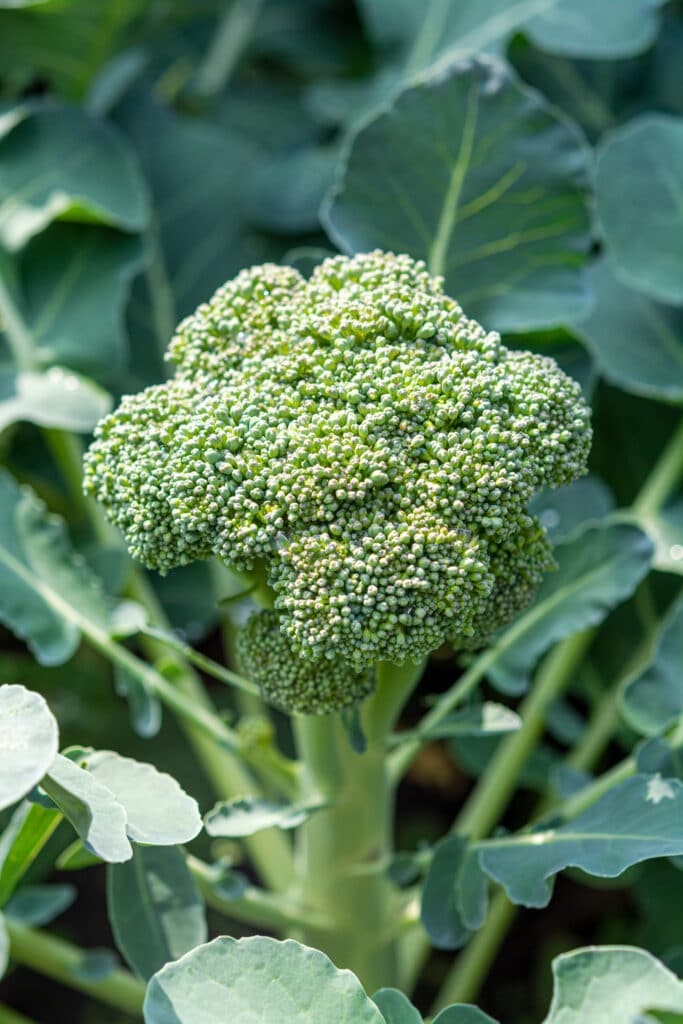How to Grow Onions in Containers: Expert Tips and Techniques
Grow onions in containers for a rewarding and easy growing experience. This blog post will cover all the ins and outs of growing onions in containers, including sunlight requirements, soil requirements, how long it takes to grow an onion harvest from pots, and the best onion types that thrive in small spaces.
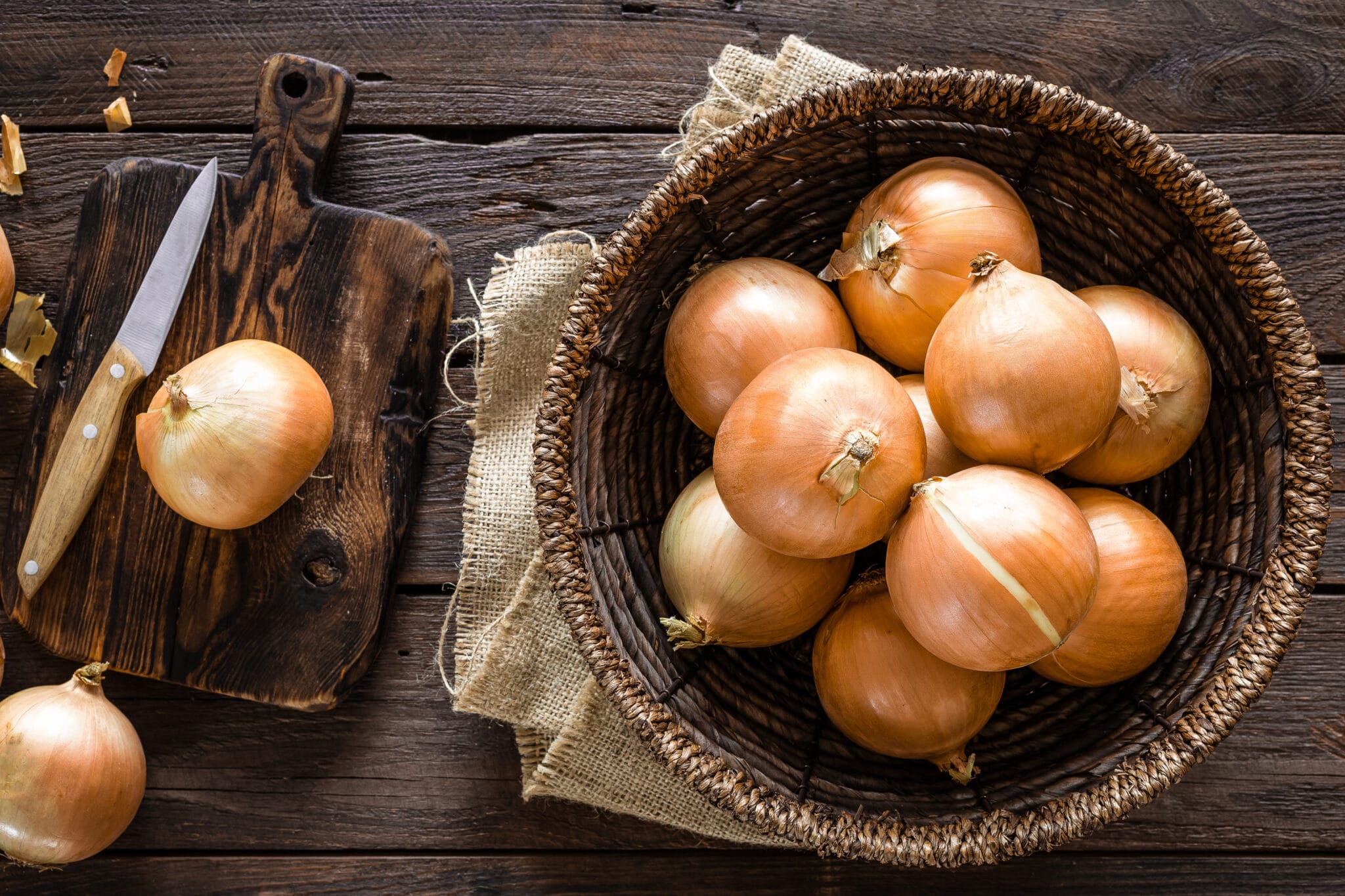
I’ve grown onions in tiny containers on my windowsill with much glee. It’s so much fun to try your hand at container vegetable gardening, and you never know what you’ll be able to grow!
Can You Grow Healthy Onions in Pots?
You bet you can!
Onions are one of the most versatile vegetables to grow in containers. They can be grown indoors and outdoors; they require little growing space because their roots don’t spread too far for nutrients. They produce well with less attention than other plants, and you’ll likely get a better yield per square foot when growing them in pots instead of growing them in the ground.
People are often surprised at how well vegetables like carrots, pumpkins, potatoes, greens, or herbs, (and more), grow well in containers, but they do! You can create a full, robust garden without having access to land. You can even grow small fruit bushes like blueberries and raspberries in containers. So don’t let space limit your ability to grow your food.

Step 1: Choose The Right-sized containers with good drainage
Container size is important for growing onions. A pot with a depth of at least six inches and a width proportionate to the height will work well. The onion tops should not touch each other when growing but should be separated by two inches or more.
Onion plants can grow as tall as three feet; choose wide enough containers to accommodate the growing plant.

Step 2: Choose well-draining soil with lots of organic material
Soil requirements are the next key to growing onions – with the right soil, your container-grown onions will thrive.
Sandy loam is the best type of soil for growing your onion. It should have a lot of organic material and not be too heavy with clay or sand.
Add generous compost, peat moss, and sand to your potting soil to create sandy loam soil at home.
Step 3: Start Seeds Indoors or Buy Onion Starts From the Nursery
Start onion seeds indoors at least eight weeks before planting. Or buy onion starts from the nursery.
Plant them one inch deep and at least two inches apart in a container with drainage holes.
Add soil around roots as they grow. When onion tops are about six inches high, add more growing mix to cover the growing tips of onions slightly above ground level if needed.
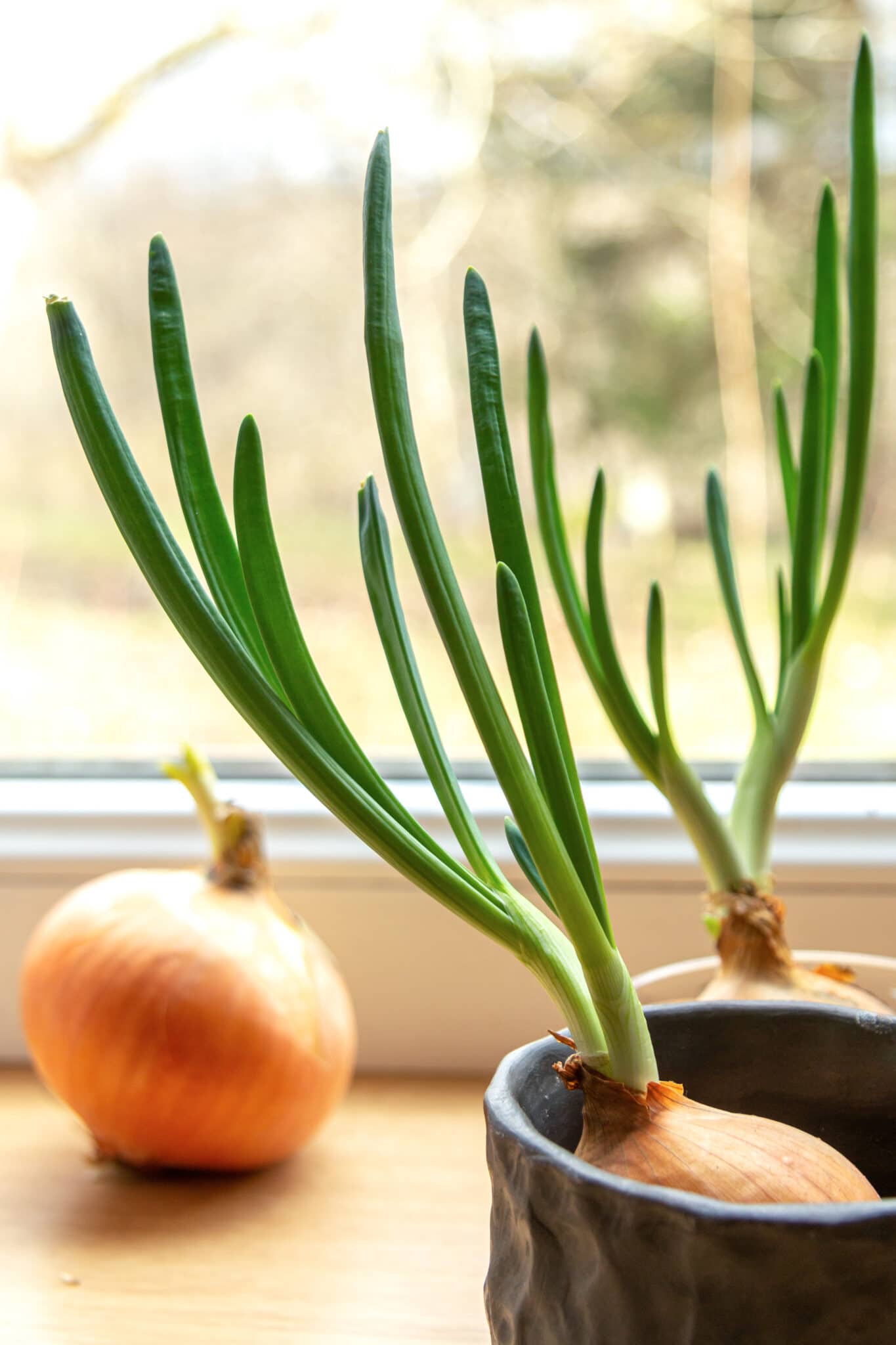
Step 4: Provide At least 6 Hours of Sunlight
Onions need at least six hours of sun daily to get a good harvest of plump onions. You can grow them in a shady area, but be sure they get at least four hours of the afternoon sun.
Onions grown in the shade may not grow as large.
Step 5: Provide Daily Watering
Onions growing in containers need to be watered every other day.
To help prevent soil from becoming compacted, you can either place mulch around the base of your pot or add a few river stones to the bottom to help drainage.
Note: If you are growing your onions outdoors in containers, check on them daily on hot days. Containers can dry out very quickly. You may need to water your containers daily during extreme heat.

Step 6: Pick the Onion Varieties that Grow Well In Pots
Many different types of onion cultivars grow well in a container, but the most popular one is Red Creole. This type of onion has been specifically bred to grow well in container-style gardens.
Other cultivars that do well in containers are Golden Creole, The Walla Walla Sweet Onion (so good!), and Sweet Spanish White.
If you want to grow a different type of onion, make sure it has the words “container-grown” on the plant’s label when purchasing it at your local nursery or garden store.
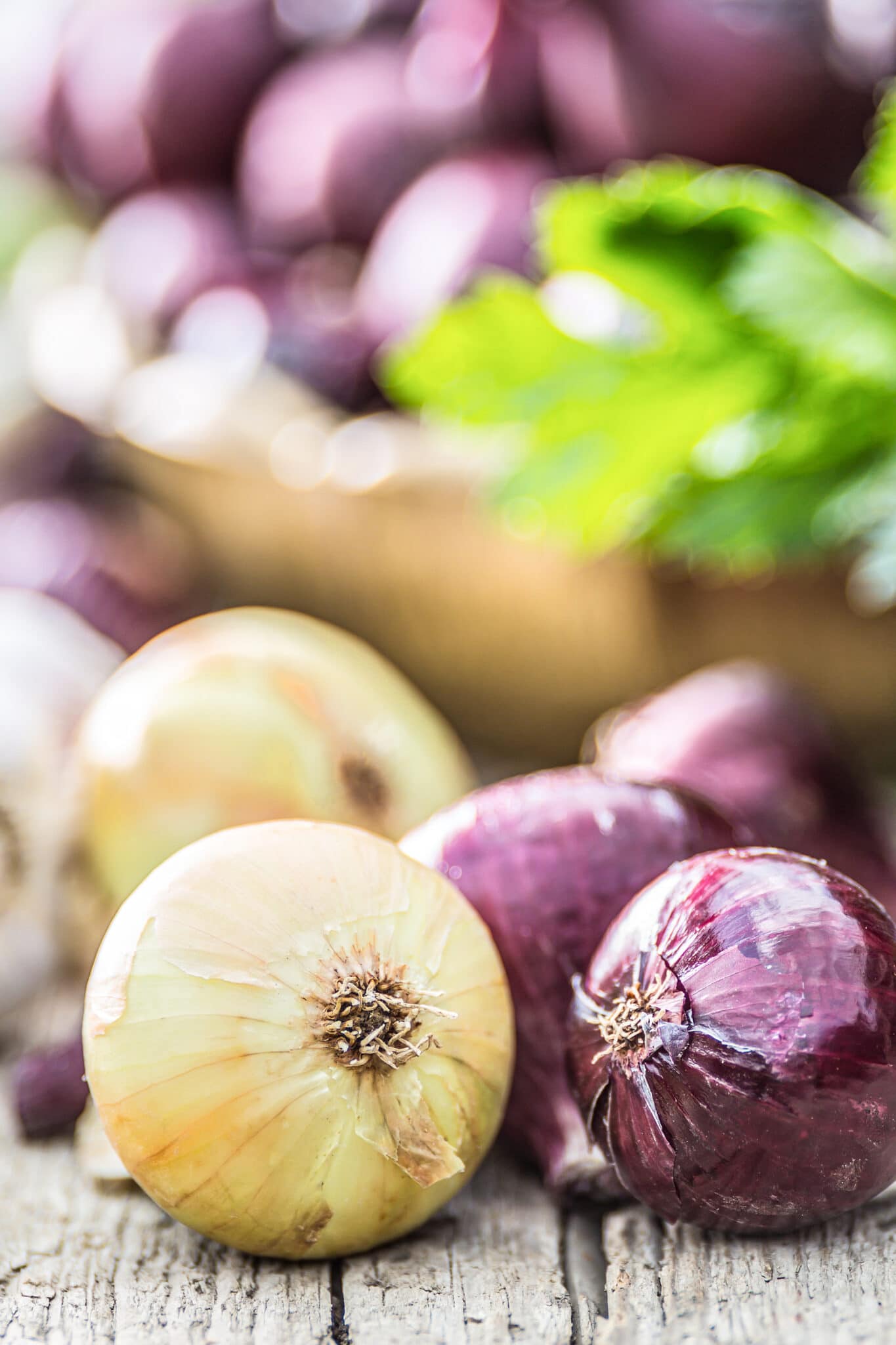
Step 7: Fertilize Every 2-3 weeks
Onions grown in containers benefit from regular feeding to support their growth and bulb development. Using a balanced nitrogen-rich fertilizer, apply according to package instructions every 2-3 weeks during the growing season. This ensures the plants access essential nutrients for healthy foliage and robust bulb formation.
Step 8: Thin The Onions as Needed
As onions mature in containers, they may become overcrowded, hindering bulb development. To optimize bulb size and yield, thin out the onion plants as needed by removing smaller bulbs. This allows the remaining onions more space to grow and develop fully, resulting in larger, more flavorful bulbs at harvest time.
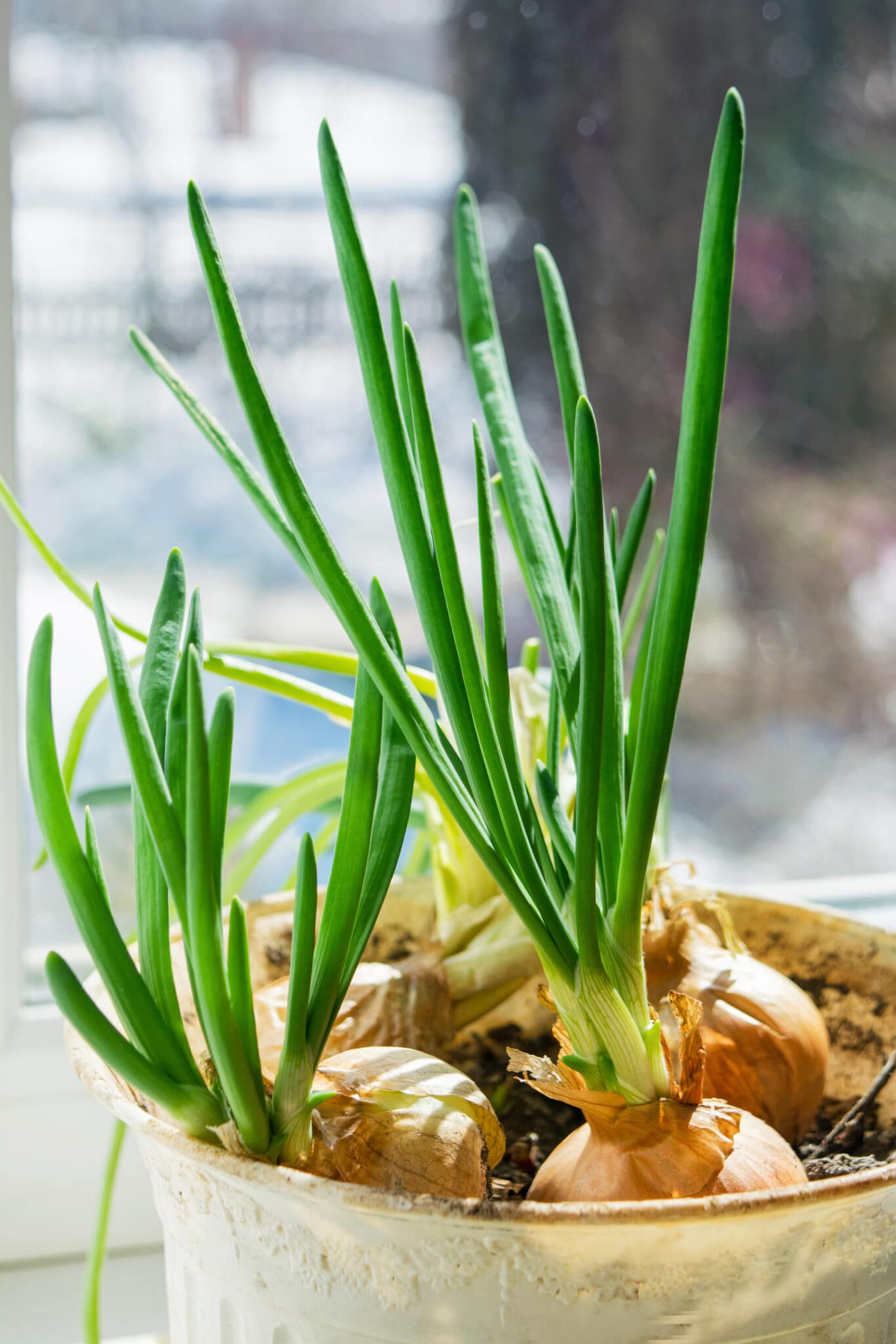
Step 9: Add Some Mulch
Mulching around onion plants in containers offers several benefits for their growth and development. Organic mulches like straw or shredded leaves help retain moisture in the soil, reducing the frequency of watering needed.
Additionally, mulch suppresses weed growth, which can compete with onions for nutrients and space in the container. Maintaining a consistent soil temperature through mulching promotes optimal onion growth and minimizes plant stress.
Step 10: Monitor for Pests and Diseases
Monitoring pests and diseases is crucial for maintaining healthy onion plants in containers. Pests such as onion thrips and maggots can damage foliage and bulbs if left unchecked. Inspect the plants regularly for signs of infestation or disease, such as yellowing leaves or fungal growth.
Practice good sanitation by promptly removing any affected plant material to prevent the spread of pests and diseases throughout the container garden. Natural pest control methods or approved pesticides can help manage pest populations and protect your onion crop. You can add a few plants that repel bugs and pests as companions around your onion pots.
Expert Tips
Growing onions in containers can be a rewarding experience, especially for those with limited space. Here are some expert tips to help you successfully grow onions in containers:
- Choose the Right Container: Opt for containers at least 6 inches deep to accommodate the onion’s root system. Make sure the container has drainage holes to prevent waterlogging.
- Select Suitable Onion Varieties: Look for onion varieties well-suited for container gardening.
- Use Quality Potting Mix: Use a well-draining potting mix rich in organic matter. Avoid using garden soil, as it can become compacted in containers and hinder root growth.
- Planting Technique: Plant onion sets or seedlings about 1 inch deep in the potting mix, spacing them 3-4 inches apart. If planting from seeds, sow them thinly and cover lightly with soil.
- Provide Adequate Sunlight: Place the containers in a location that receives at least 6-8 hours of sunlight daily. Onions thrive in full sun.
- Watering: Keep the soil consistently moist but not waterlogged. Onions have shallow roots, so frequent watering may be necessary, especially during hot weather. However, ensure that the container has proper drainage to prevent waterlogging.
- Fertilize Regularly: Onions are heavy feeders and benefit from regular fertilization. Follow the package instructions to apply a balanced nitrogen-rich fertilizer every 2-3 weeks during the growing season.
- Thin as Needed: If the onions become overcrowded, thin them out by removing smaller bulbs to allow the remaining ones more space to grow.
- Mulch: Mulching around the onion plants helps retain moisture, suppress weeds, and maintain a consistent soil temperature. Organic mulches like straw or shredded leaves work well for container-grown onions.
- Monitor for Pests and Diseases: Check for common onion pests such as onion thrips and maggots. Practice good sanitation and promptly remove any affected leaves or plants to prevent the spread of diseases.
Frequently Asked Questions
While onions can be grown in various containers, it’s best to use containers at least 6 inches deep to accommodate the onion’s root system. Ensure the container has drainage holes to prevent waterlogging.
Use a well-draining potting mix rich in organic matter. Avoid using garden soil, as it can become compacted in containers. A mix formulated for vegetables or herbs is suitable for growing onions.
Keep the soil consistently moist but not waterlogged. Watering needs may vary depending on the weather and container size. Check the soil moisture regularly, especially during hot weather, and water when the top inch of soil feels dry.
Yes, onions can be grown indoors in containers near a sunny window or under grow lights. Ensure the plants receive adequate light and ventilation to thrive indoors.
Ensure proper container drainage to prevent waterlogging, which can lead to bulb rot. Avoid overwatering and maintain good air circulation around the plants to reduce the risk of fungal diseases.

Printable Instructions: How to Grow Onions In Containers
Easy step-by-step instructions and tips for growing healthy onions in pots. No garden, no space, no problem! You can grow onions on your patio and balconies just fine in containers and pots.
Materials
- Onion seedlings
- Pots
- Soil
- Fertilizer
Tools
- Gloves
- Trowel
- Watering can
Instructions
- Step 1: Choose Right Sized containers with Good Drainage.
- Step 2: Choose well-draining soil with lots of organic material.
- Step 3: Provide At least 6 Hours of Sunlight.
- Step 4: Provide Daily Watering
- Step 5: Pick the Onion Varieties that Grow Well In Pots
- Step 6: Fertilize Every 2-3 weeks
- Step 7: Thin The Onions as Needed
- Step 8: Add Some Mulch:
- Step 9: Monitor for Pests and Diseases:
Grab Our Ultimate PRINTABLE Garden Planner
With 39 pages of planning and organizing and the ability to customize your planner with the pages you need, you won’t need another planner for the rest of your gardening life!
$4.99 US

Final Remarks
It’s that easy. Growing onions in containers offers a convenient and rewarding way to cultivate this versatile kitchen staple, even in limited space. With careful attention to container selection, soil quality, planting techniques, and maintenance practices such as fertilizing, thinning, mulching, and pest management, container gardeners can enjoy a bountiful harvest of flavorful onions right at their fingertips.
Related Posts

Author: Laura Kennedy
Writer & Owner of Little Yellow Wheelbarrow
Editor’s Note: This post was originally published on August 14, 2021. It was updated on February 21, 2024 to improve readability and add Expert Tips and FAQs.








